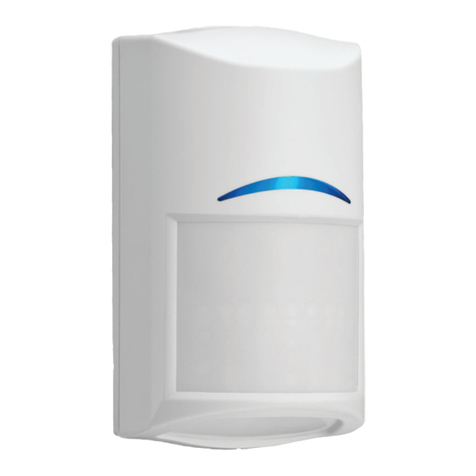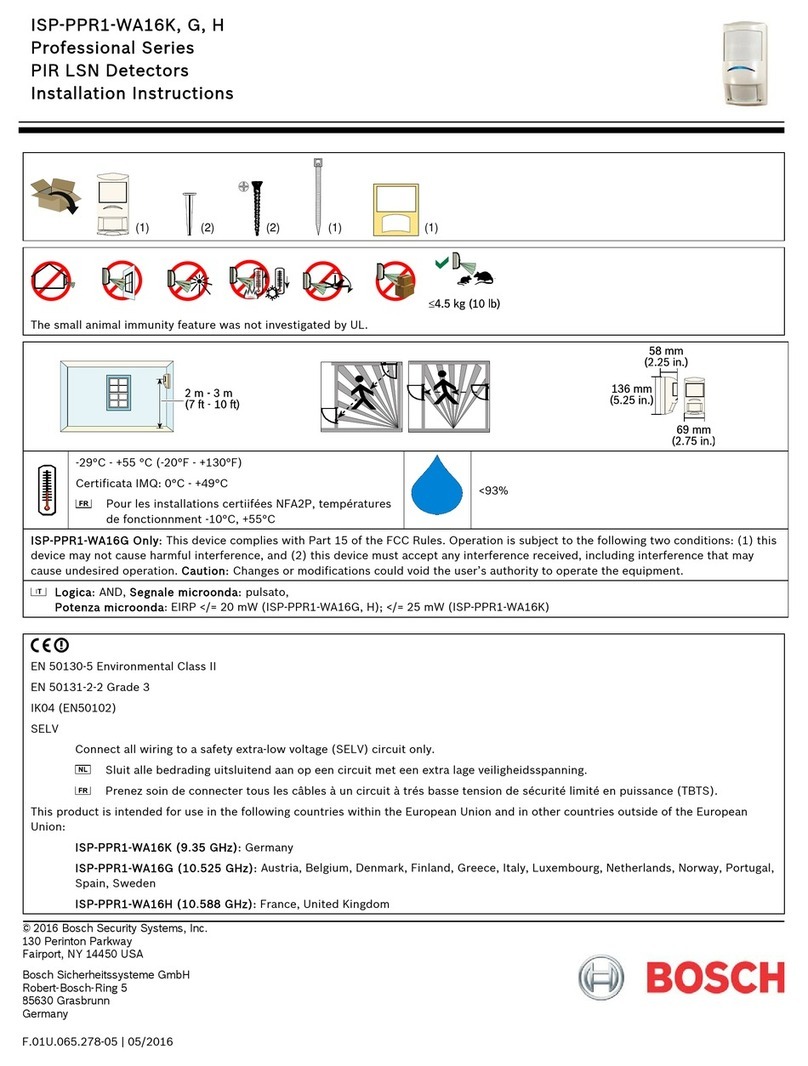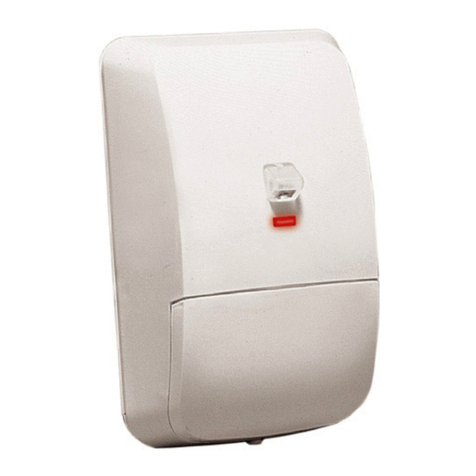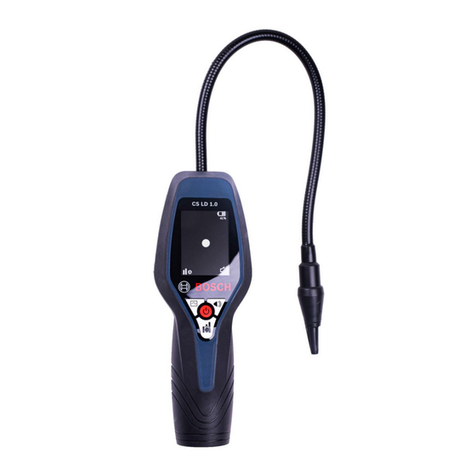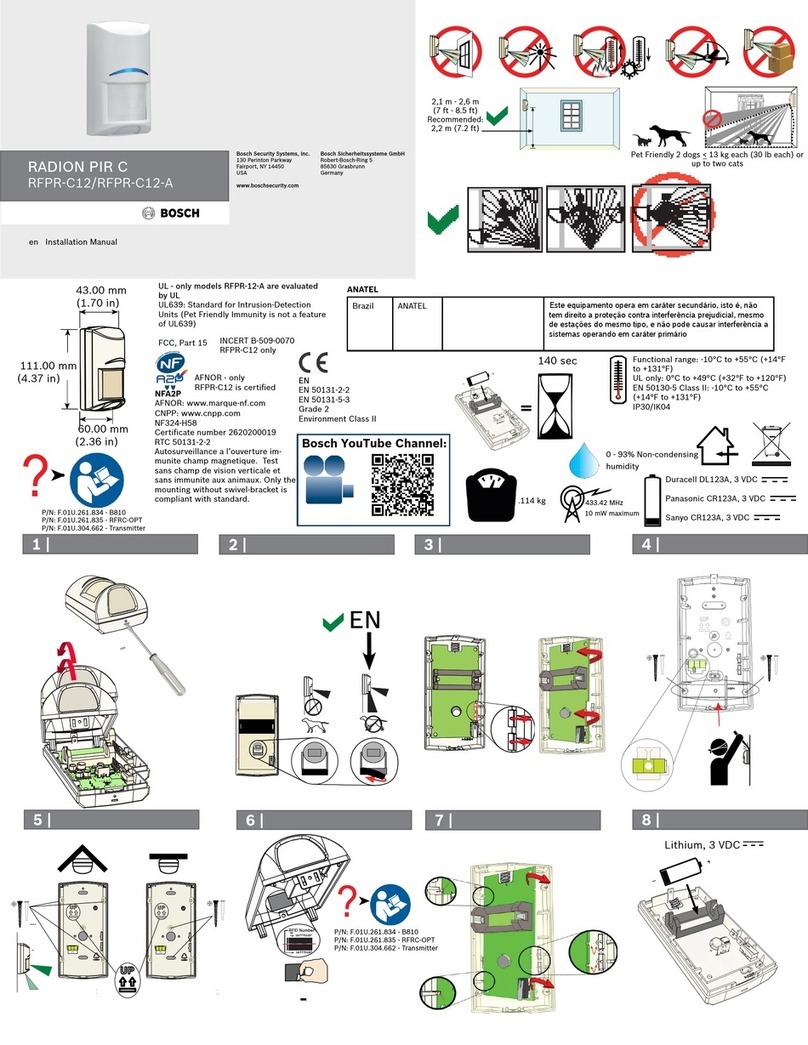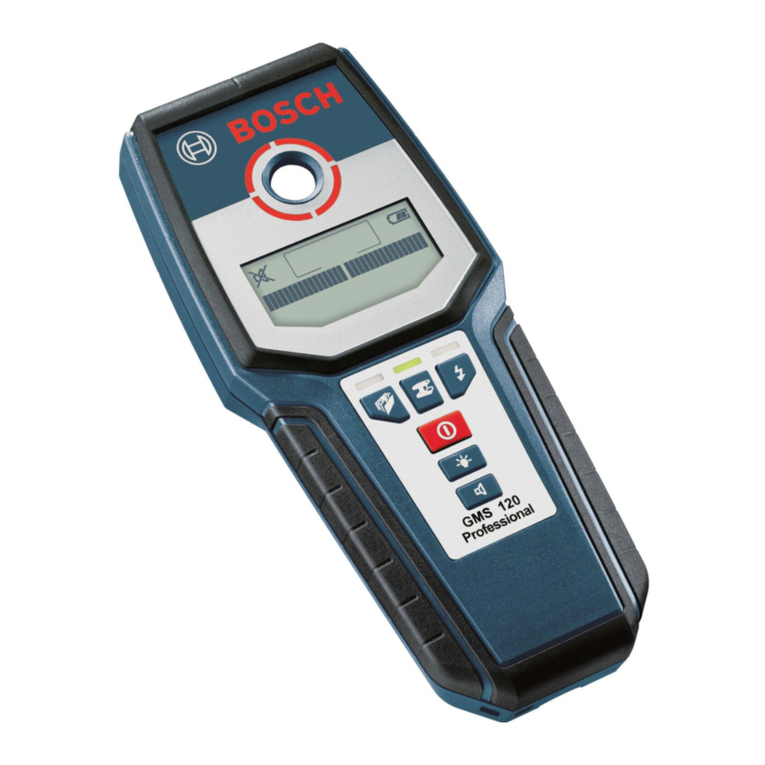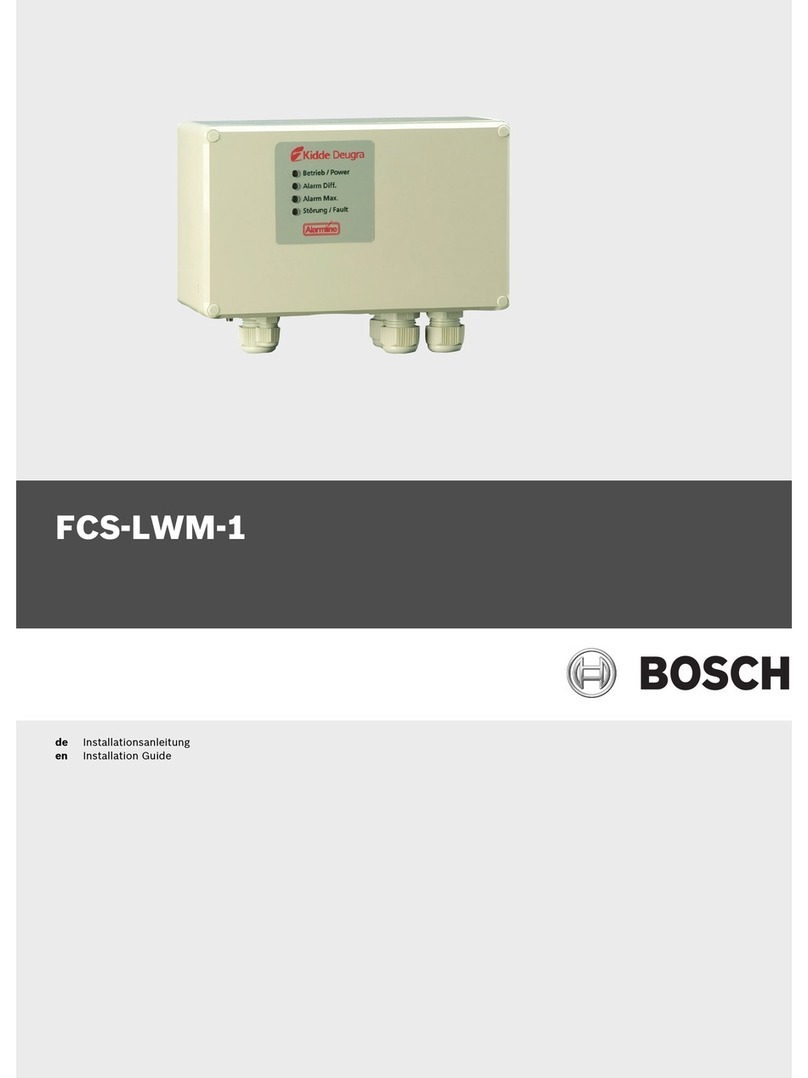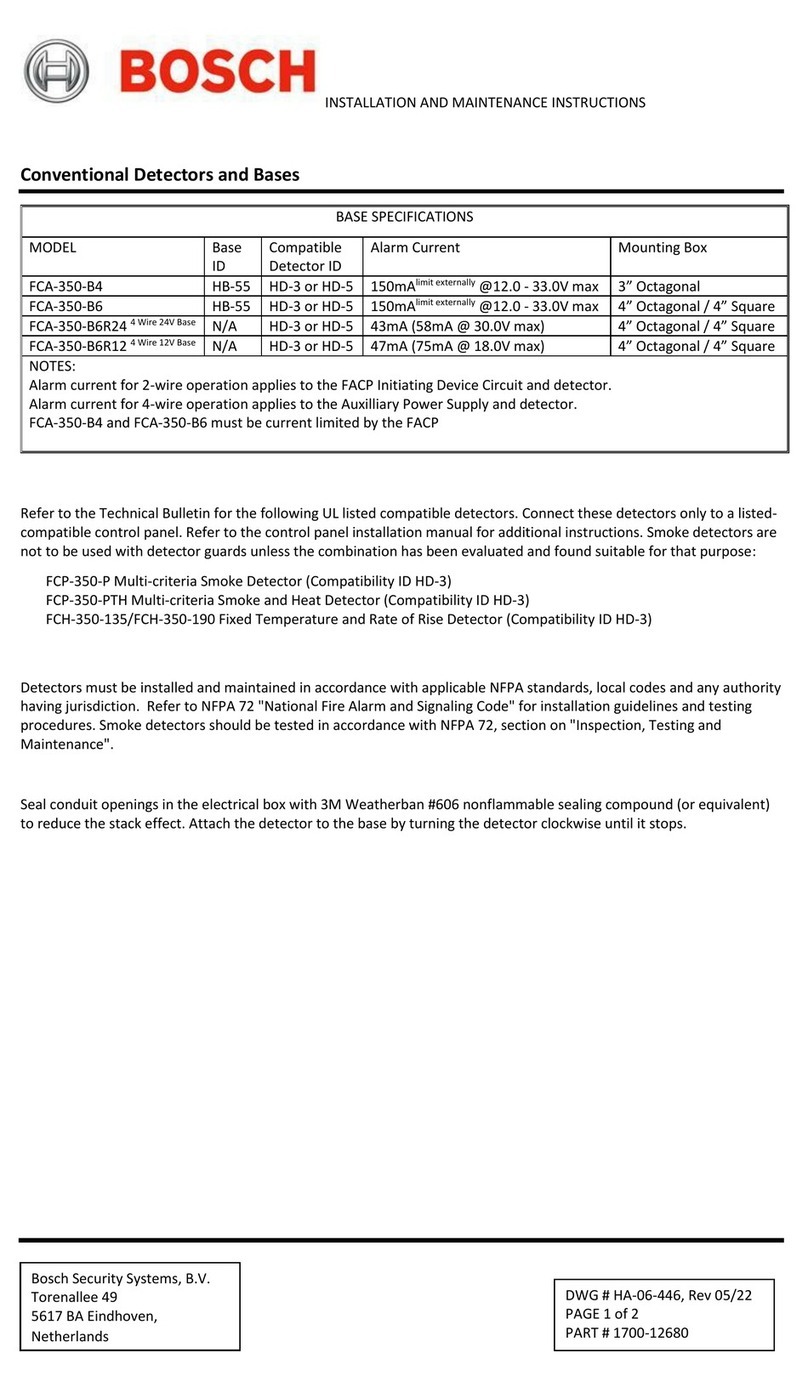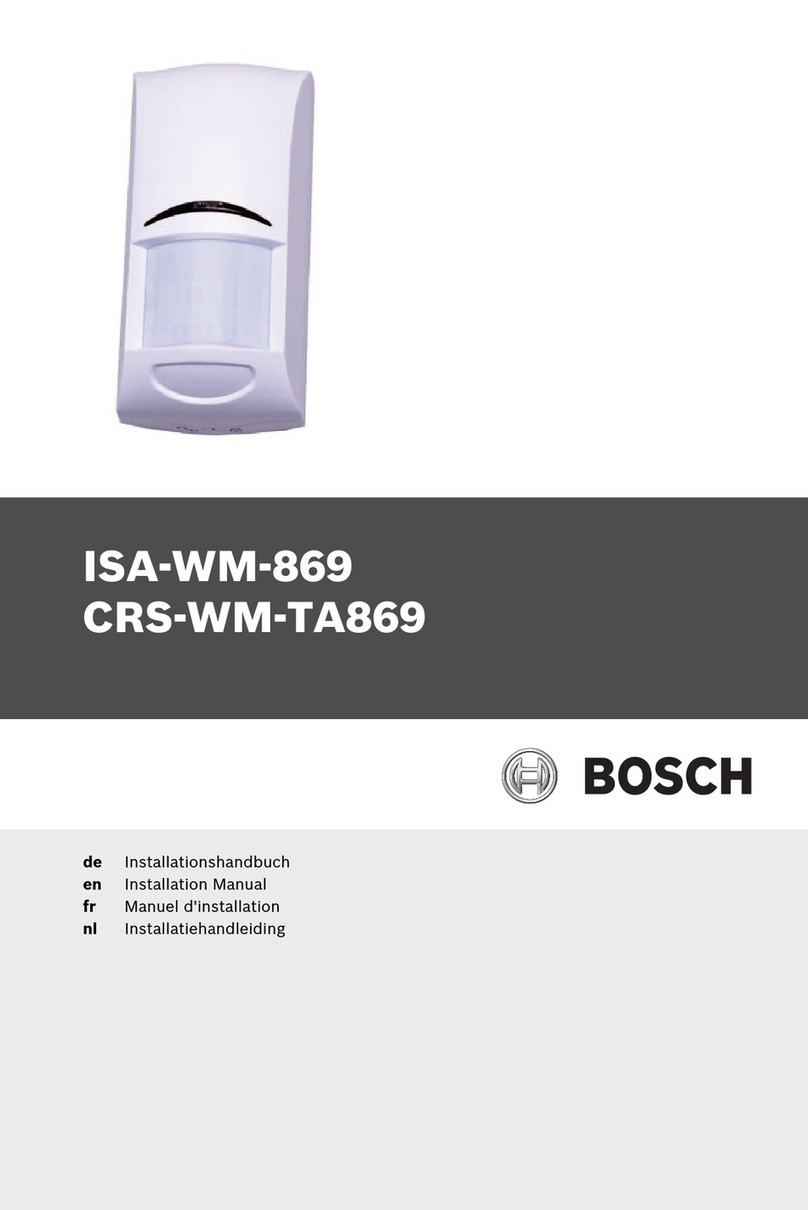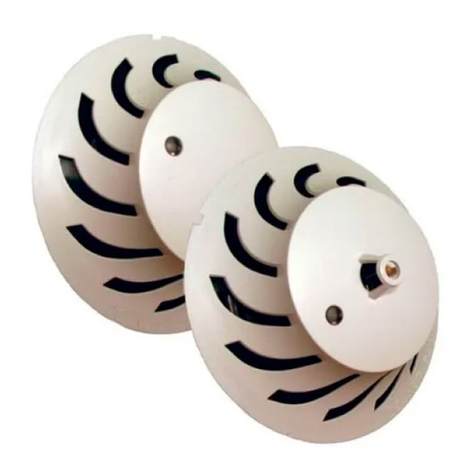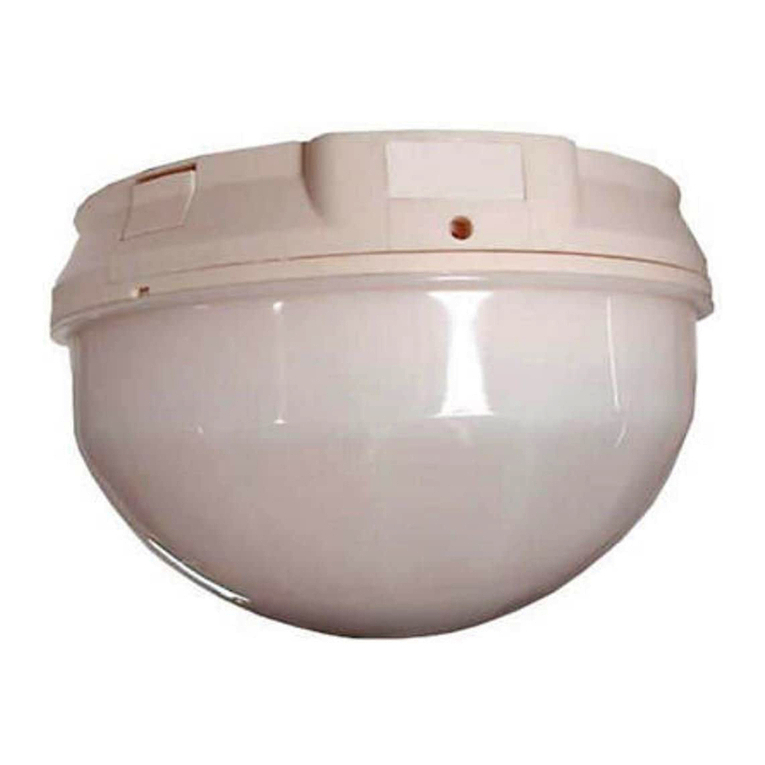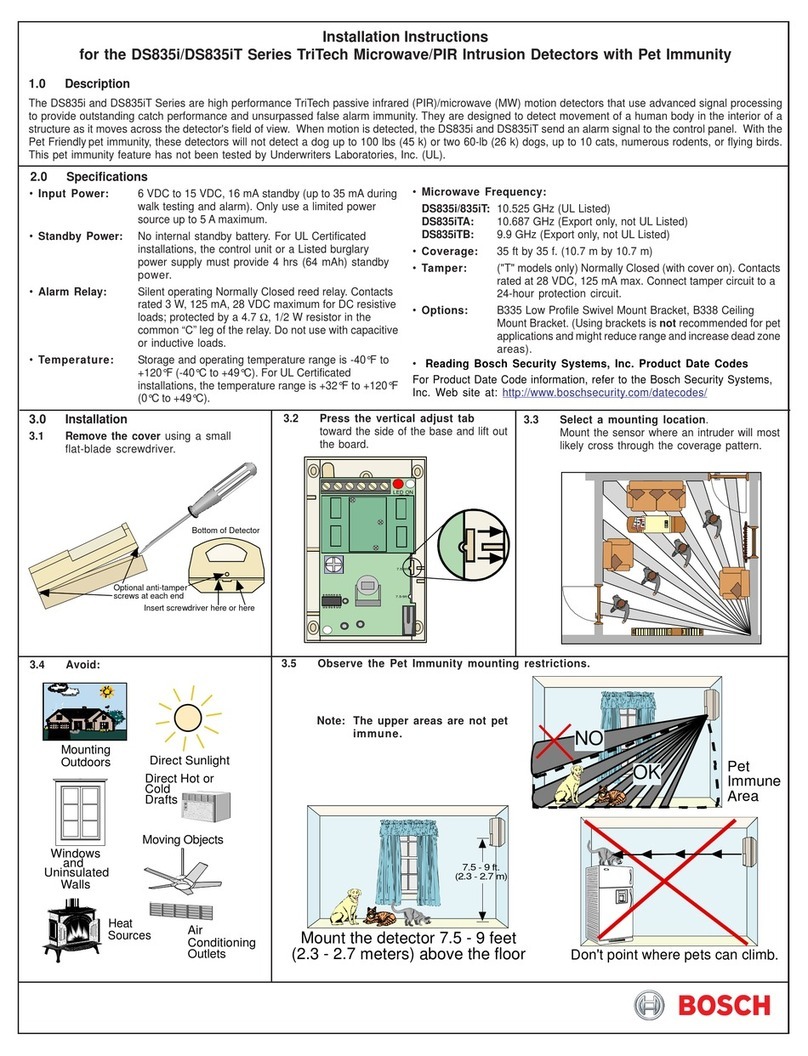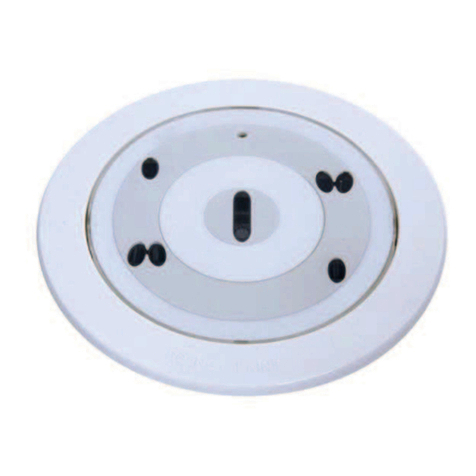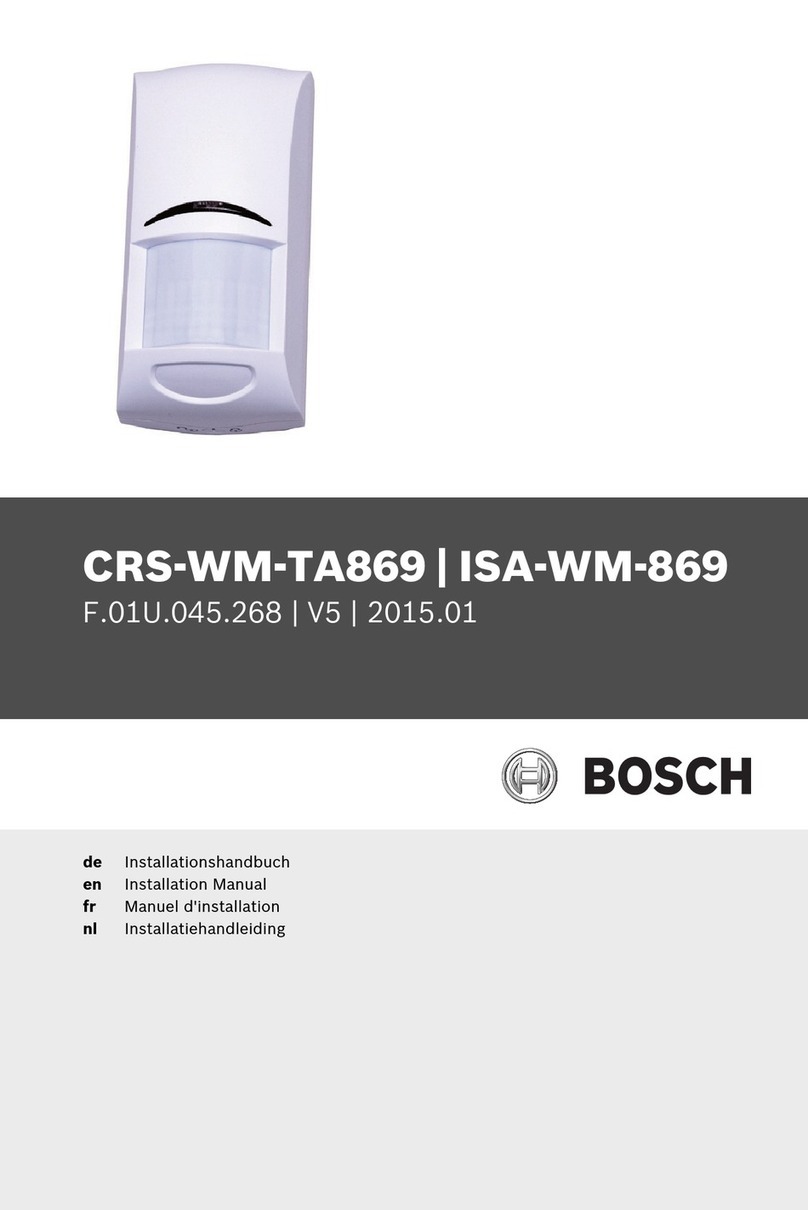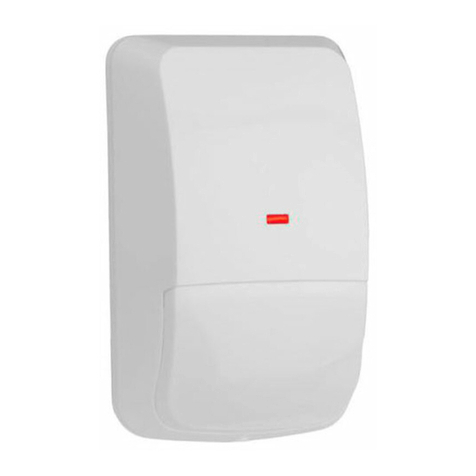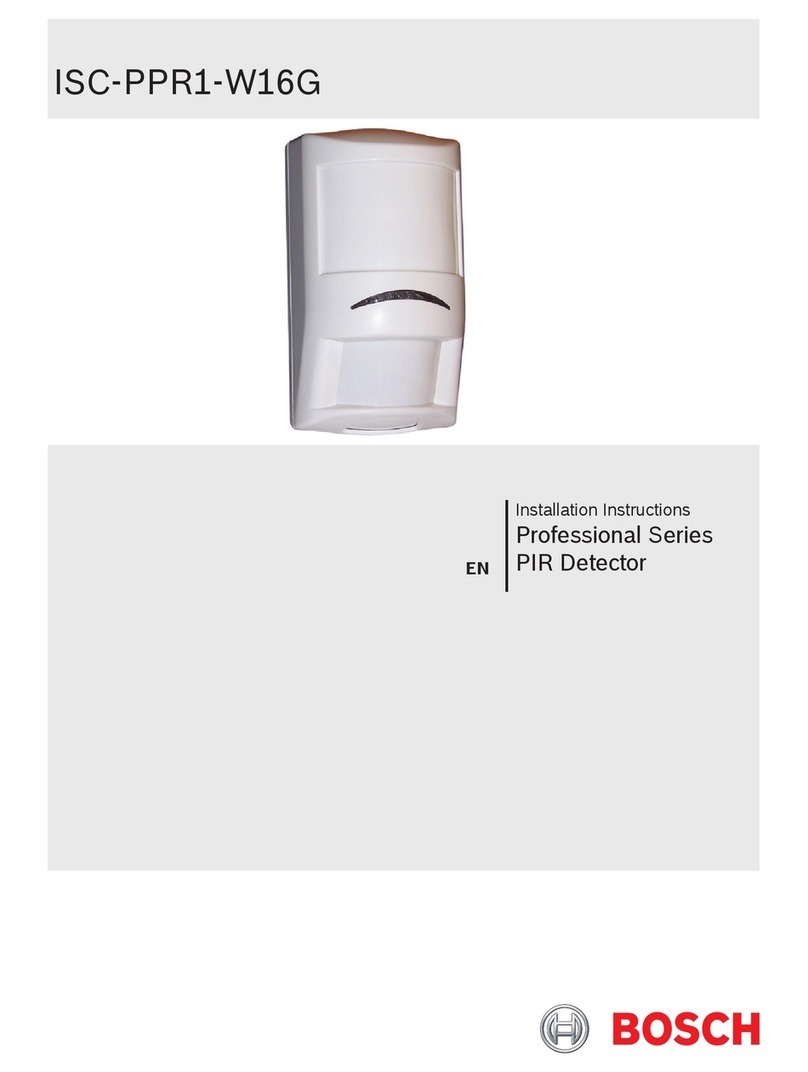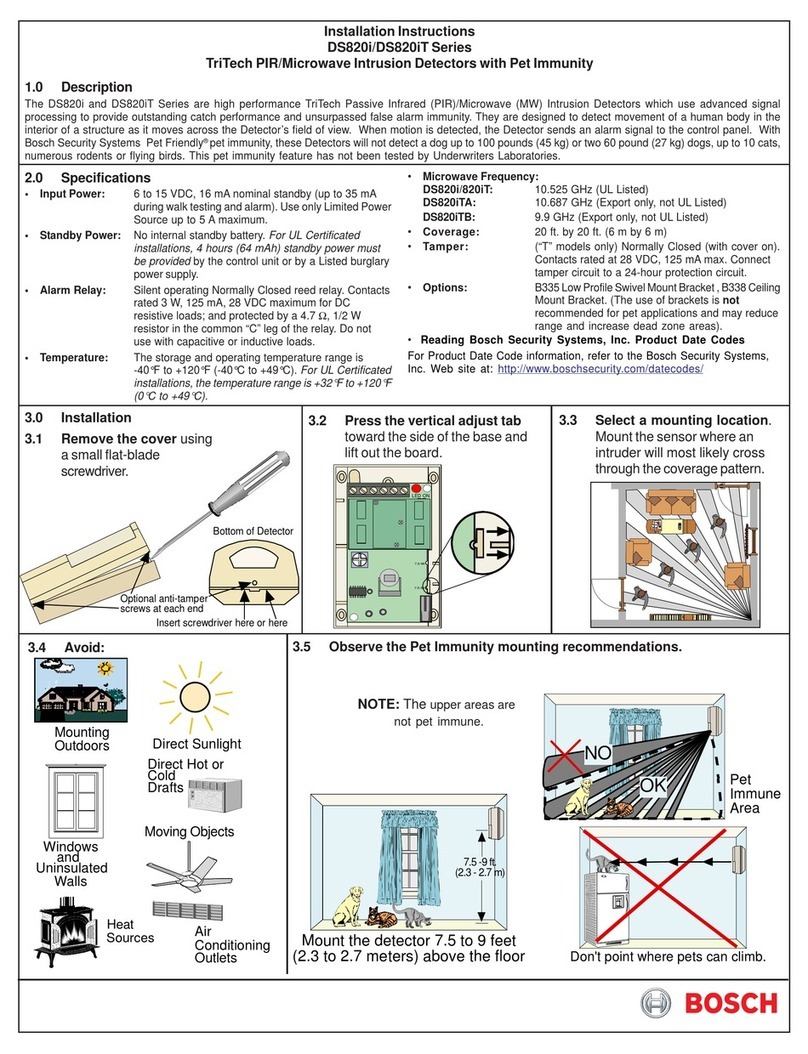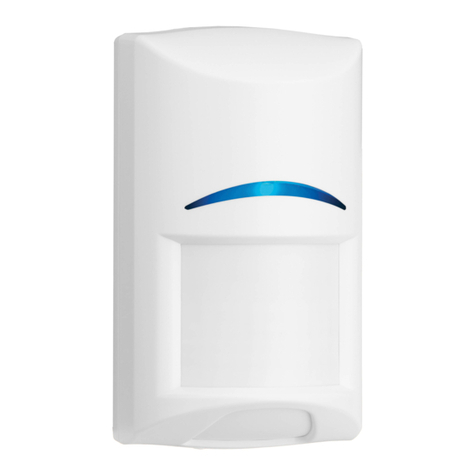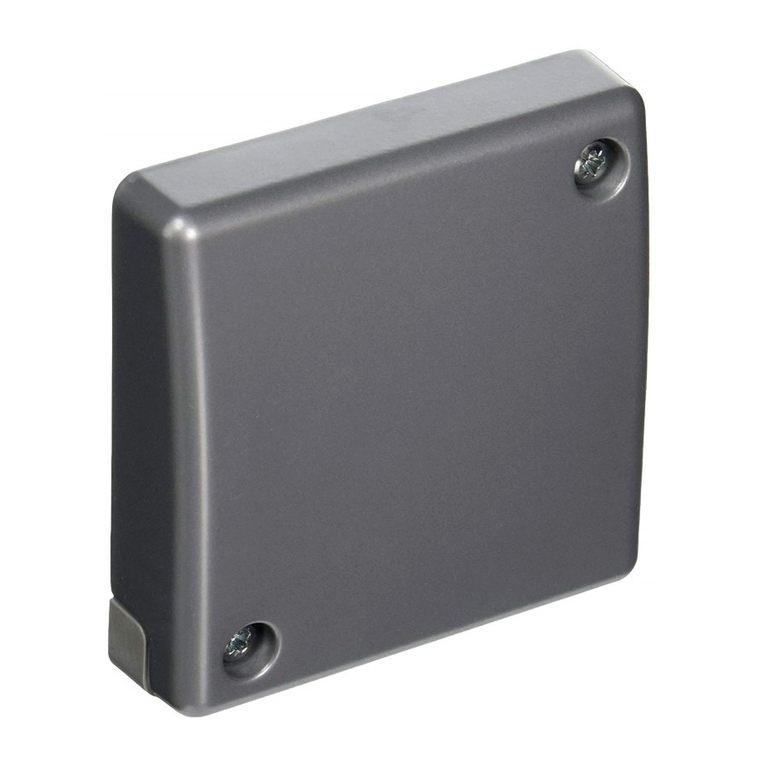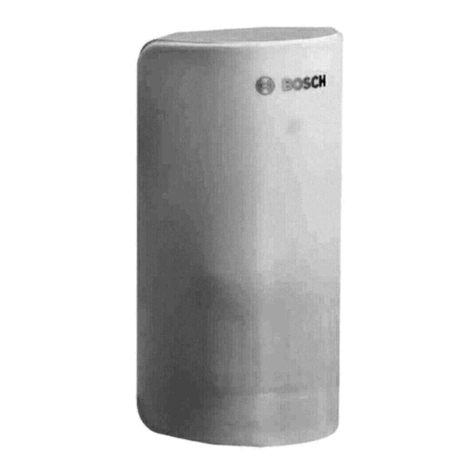
Page 2 © 2011 Bosch Security Systems, Inc. DS820 Series Installation Instructions
• Securely attach the base to the mounting surface.
• Return the circuit board to the base and tighten the Vertical
Adjust Screw.
4.0 Wiring
CAUTION
Only apply power after all connections have been
made and inspected. Do not coil excess wiring
inside detector.
NOTE: Input power must use only an Approved Limited Power
Source. Alarm and Tamper Contacts to be connected to a
SELV (Safety Extra-Low Voltage) circuit only.
1234
–+CNC
Alarm
Relay
Alarm
5678
SP T SPT
Tamper
9-15 VDC
Input Tamper
•Terminals 1 (–) & 2 (+): Voltage limits are 9 to 15 VDC. Use no
smaller than #22 AWG (0.8 mm) wire pair between the
detector and the power source.
•Terminals 3 & 4: Alarm relay (reed) contacts rated 3 watts,
125 mA, 28 VDC maximum for DC resistive loads and
protected by a 4.7 ohm, ½ watt resistor.
NOTE: Do not use with capacitive or inductive loads.
•Terminals 5 and 8: Spare.
•Terminals 6 & 7: Tamper contacts rated at 28 VDC, 125 mA.
NOTE: Plug the wire entrance hole with the foam plug provided
after all wiring connections have been made.
5.0 LED Operation
The detector uses a tri-color LED to indicate the various alarm and
supervision trouble conditions that may exist. See chart below.
LED CAUSE
Steady red Unit alarm
Steady yellow Microwave activation (walk test)
Steady green PIR activation (walk test)
Flashing red Warm-up period after power-up
Flashing red (4 pulse sequence) Replace Unit
If the detector experiences a Microwave or PIR
self-test failure, it is in need of replacement.
NOTE: During walk testing, the LED will light for the first
technology (microwave or PIR) and then light red to
indicate a detector alarm. The LED will not indicate
activation of the second technology by lighting its color.
6.0 Feature Selection
6.1 LEDOn/OffPins
The ON position allows operation of the tri-color
LED. If LED indication is not desired after setup and walk tests are
completed, place in the OFF position. The OFF position does not
prevent the LED from indicating supervision trouble conditions.
6.2 PIR Sensitivity Selection Pins
For selection, place the plug across the pins
marked STD for Standard or INT for
Intermediate mode.
• Standard Sensitivity: The recommended setting for
maximum false alarm immunity. Tolerates environmental
extremes on this setting. Required setting for Pet Immunity.
• Intermediate Sensitivity: The recommended setting for
non-pet applications where an intruder is expected to
cover only a small portion of the protected area.
Tolerates normal environments on this setting. This
setting will improve your intruder catch performance.
7.0 Set-up and Walk Tests
Select the vertical starting angle from this chart:
To adjust the vertical
starting angle for the
desired mounting height
and range, loosen the
vertical adjust screw and
slide the board up, to point
the angle down. Note the
settings on the vertical
adjust scale.
NOTE: The proper vertical
angle must be selected for installations containing pets.
See Section 11.0
• Place the LED plug in the ON position and replace the cover.
7.1 Establishing PIR Pattern Coverage
• Turn the Microwave range adjust to minimum.
• Replace the cover and snap it into place. This will close the
tamper switch.
•Wait two minutes minimum after applying power to start walk
tests.
NOTE: During the warm-up period, the tri-color LED will flash red
until the unit has stabilized (approximately 1 to 2 minutes)
and has seen no movement for two seconds. When the
tri-color LED stops flashing, the detector is ready to be
tested. With no motion in the protection area, the tri-color
LED should be OFF. If the LED is on, re-check the
protection area for disturbances affecting the microwave
or PIR technologies.
• Walk test across the pattern at its farthest edge, then several
times closer to the detector. Start walking from outside of the
intended protection area, and observe the tri-color LED. The
edge of the pattern is determined by the first green, PIR
activation of the LED (or the first red activation if the yellow
microwave LED activates first).
• Walk test from the opposite direction to determine both
boundaries. The center of the pattern should be pointed
toward the center of the intended protection area.
NOTE: The pattern may be moved ±10° horizontally by rotating the
lens window left or right.
• Slowly bring your arm up and into the pattern to mark the lower
boundary on PIR alarm. Perform this task at 10 to 20 ft. (3 to
6 m) from the unit. Repeat from above for the upper boundary.
The center of the pattern should not be tilted upward.
NOTE: If the desired coverage cannot be achieved, try angling the
coverage pattern up or down to assure the pattern is not
aimed too high or low. The angle of the PIR pattern may be
vertically positioned between -10° and +2° by loosening
the Vertical Adjust screw and sliding the circuit board up or
down. Moving the board up will angle the pattern
downward.
• Tighten the Vertical Adjust screw when positioning is completed.
DS820 Range
Mounting
Height 20 ft. (6 m)
6.5 ft. (2 m) -9°
7.0 ft. (2.3 m) -10°
8.0 ft. (2.4 m) -10°
On
Off
INT
STD
